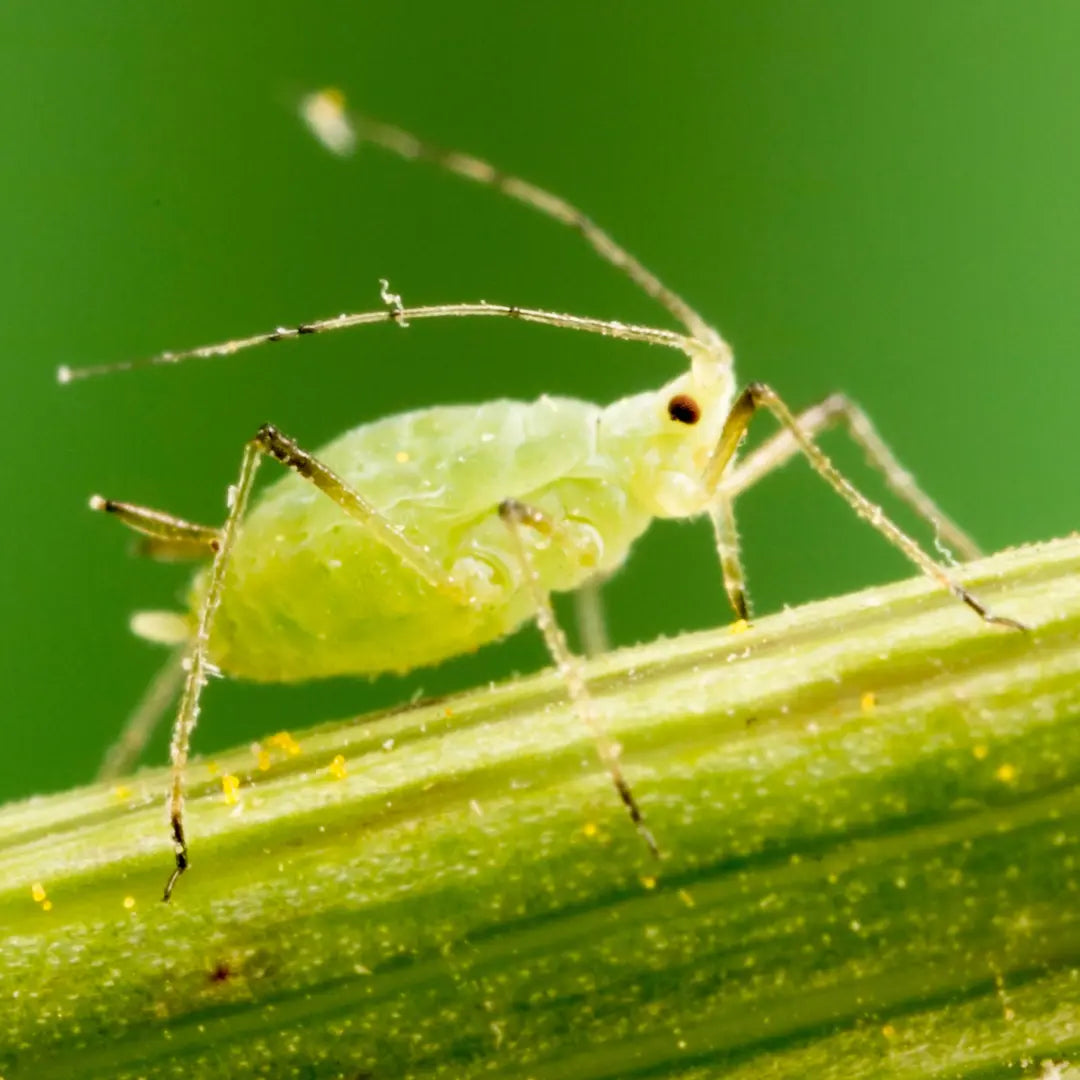
The Aphid Battle
One of the most common issues chilli growers face is the presence of aphids on their plants. These tiny insects can cause significant damage if left unchecked. This comprehensive guide will walk you through understanding, identifying, preventing, and treating aphid infestations on your chilli plants in New Zealand.
What is an Aphid: The Tiny but Tenacious Pest
Aphids are small, soft-bodied insects that belong to the family Aphididae. They are commonly known as plant lice and can be found worldwide. Aphids feed on the sap of plants, causing them to wilt, yellow, and eventually die. They are particularly attracted to chilli plants, as they love the tender new growth and the sweet sap that these plants produce.
Collapsible content
Identification
Aphids come in various colours, including green, black, brown, and even pink. They have pear-shaped bodies, long antennae, and two tube-like structures, called cornicles, protruding from their rear ends. They are typically found on the undersides of leaves and on new growth, where they can feed on plant sap. Aphids also produce a sticky substance called honeydew, which can attract ants and lead to the growth of sooty mould, further harming your chilli plants.
Prevention
Prevention is always better than cure, so follow these steps to keep your chilli plants aphid-free:
- Monitor your plants closely and inspect them regularly for signs of aphids.
- Grow companion plants, such as marigolds, nasturtiums, and chives, which repel aphids.
- Encourage natural predators, like ladybirds, lacewings, and hoverflies, by planting flowers that attract these beneficial insects.
- Keep your plants healthy by providing adequate nutrients, water, and sunlight. Healthy plants are less susceptible to aphid infestations.
- Remove any heavily infested parts of the plant to prevent the aphids from spreading.
Natural Treatments
If aphids have already taken up residence on your chilli plants, don't panic. There are many natural methods to eliminate these pests:
- Physically remove them by hand or with a strong spray of water.
- Use a homemade spray made from a mixture of water, dish soap, and vegetable oil. This will suffocate the aphids without harming your plants.
- Introduce beneficial insects, such as ladybirds, lacewings, and hoverflies, which will feast on the aphids.
- Apply diatomaceous earth or neem oil to the affected areas to kill and deter aphids.
Chemical Treatments
If natural methods fail to control the aphid population, you may need to resort to chemical treatments. Always opt for the least toxic options and follow the label instructions carefully:
- Use insecticidal soaps, which are less toxic than synthetic pesticides and have minimal impact on beneficial insects.
- Apply pyrethrum-based insecticides, derived from chrysanthemum flowers, as a short-term solution.
- Employ systemic insecticides as a last resort, but be aware that they can be harmful to beneficial insects and pollinators.
Aphids may be small, but they can cause significant problems for your chilli plants. By understanding these pests, identifying them early, and taking preventive measures, you can keep your chilli plants healthy and productive. When infestations occur, employ natural methods to eliminate aphids before resorting to chemical treatments.
Growing chilli plants in New Zealand can be a rewarding experience. With a little vigilance and care, you can protect your plants from aphids and enjoy a bountiful harvest of flavourful chillies. Keep the information in this guide handy as you tend to your chilli garden, and feel free to explore the other resources available on the Ignition Seeds website for more helpful tips on growing chillies and other plants in your garden



